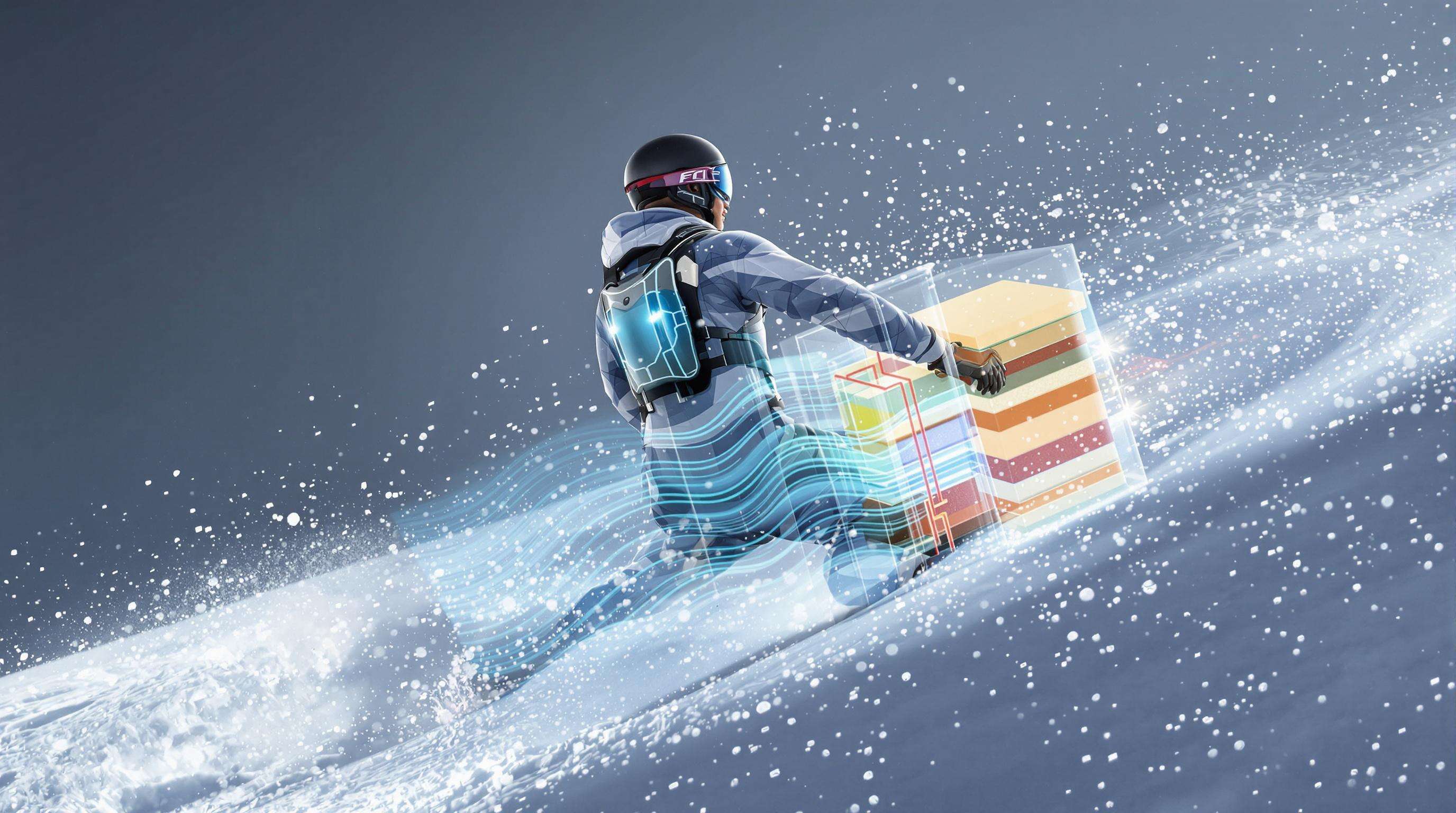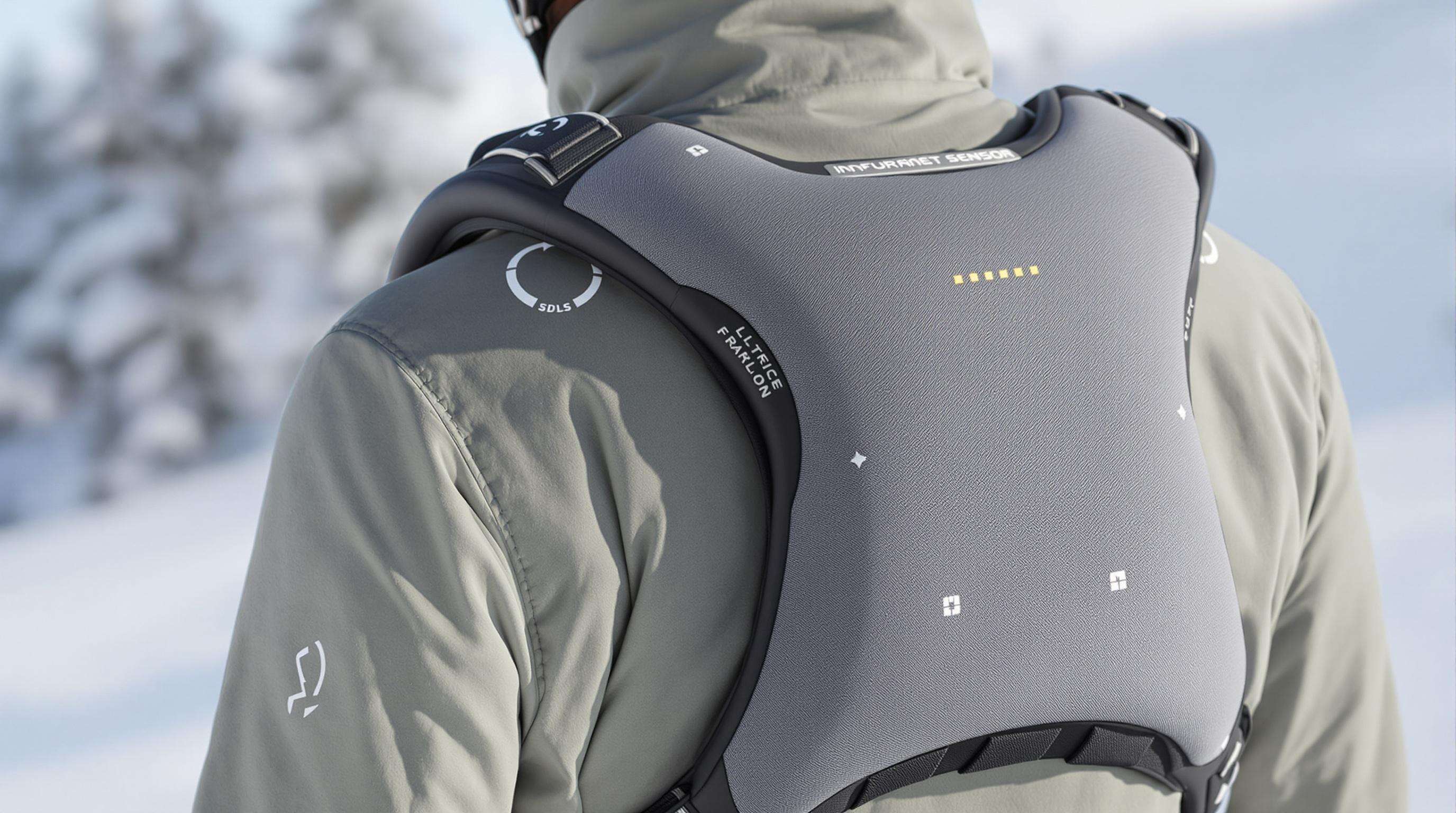
TÜV EN 1621-2 certification establishes the requirements for the back protector performance in case of high impact, with the test procedure that outlines the impact dynamics acceptable level of transmitted force and the maximum residual transmitted force to the body (well below the 18kN passed for Level 2 of the certification). Laboratory tests replicate crash forces of an impact equivalent to a 50 km/h downhill ski fall. In a review of 3,200 snow sport injuries, protectors that met the EN 1621-2 reduced vertebral compression fractures by 40% more than non-compliant systems (International Sports Engineering Association, 2010).
Compulsory use of the back protector in FIS races has produced some important outcomes. An 18000 race run analysis revealed a 35% reduction in acute spinal injury rates among the competitors who had worn EN 1621-2 Level 2 protectors, compared to prior to the regulation. The most marked decrease in thoracic vertebra fractures was registered among DH racers with a 43% reduction (-12% average speed).
Modern protectors use three energy-absorption layers:
This multi-layer design dissipates 68–72% of impact energy while maintaining 85% greater flexibility than traditional foams. Critically, it prevents force concentration in the spine, which can fail under just 500–800N of vertical load.

Newfangled A.I.-empowered pads have embedded accelerometers and pressure-sensitive films that can gauging impact forces moment by moment. This equipment measures impact angles and energy distribution and is estimated to reduce the numbers of false-negative injury assessments by 40% compared to passive designs. Flex is reinforced with adaptive protection wherever you need it – like the back – and remains flexible everywhere else.
Advanced protectors now prioritize anatomical fit, eliminating the restrictive "turtle shell" effect. 3D-knit textiles with strategic armor placement improve torso rotation by 28%, while viscoelastic polymers conform to the spine's natural curvature without interfering with layering. Some models also feature moisture-wicking channels and ventilation grids to combat overheating.
Foam protectors (avg. 450g) absorb 55–65% of impact energy but are best suited for low-impact scenarios (<15J). Hybrid systems combining EVA foam with thermoplastic polyurethane (TPU) plates demonstrate superior performance, scattering up to 78% of collision force laterally—making them ideal for high-speed competitive skiing.
Starting October 2025, the FIS will mandate airbag-equipped back protectors in World Cup alpine speed events. These must inflate within 200 milliseconds, adhere to EN 1621-2 standards, and maintain inflation for 3+ seconds while staying under 55mm thickness to balance protection and mobility.
The move follows a 35% reduction in spinal injuries in FIS-regulated competitions (2020–2023). The FIS Athlete Health Unit is also exploring broader adoption, potentially mirroring the 87% usage rate seen in World Cup racing gear. However, production costs and thermal management issues remain challenges for widespread implementation.
Stricter safety mandates and athlete advocacy have driven 87% of FIS World Cup skiers to use certified back protectors in the 2023–2024 season. Low-profile designs have minimized performance interference, making them more practical for elite athletes.
Recreational sales are expected to grow at a 22% annual rate through 2028, fueled by extreme sports participation and insurer discounts for safety-gear users. E-commerce platforms are expanding access to professional-grade equipment, with thermal-regulating fabrics and modular designs appealing to casual skiers.
Heat retention remains a major deterrent—current ventilation systems dissipate only 40% of body heat during high-intensity activity. While manufacturers are testing phase-change materials and aerodynamic channels, these solutions add 15–20% to production costs without guaranteed performance in sub-zero temperatures.
Developing CE-certified protectors costs 30–40% more than standard gear, primarily due to advanced materials and impact testing. While elite athletes drive premium demand, 68% of recreational users prioritize affordability over full EN 1621-2 compliance, creating market challenges.
The EN 1621-2 certification sets performance standards for back protectors, ensuring they can absorb significant impact forces to reduce spinal injuries, especially during high-impact activities like skiing.
Back protectors that meet EN 1621-2 standards can reduce vertebral compression fractures by up to 40% and significantly cut acute spinal injury rates in competitive racing.
Modern protectors feature materials like shear-thickening polymers, auxetic foam cores, and viscoelastic layers, as well as smart sensors and adaptive protection frameworks to enhance flexibility and energy absorption.
 Hot News
Hot News2025-12-08
2025-09-15
2024-12-30
2024-12-23
2024-12-09
2024-12-02